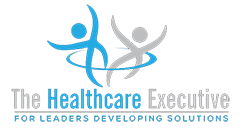Navigating Healthcare Reforms: Preparing for Policy Changes in 2024

Navigating Healthcare Reforms: Preparing for Policy Changes in 2024
Introduction
Healthcare reforms continually reshape the landscape in which healthcare providers operate. As we move into 2024, anticipating and preparing for policy changes is essential for healthcare leaders to ensure compliance and strategic alignment. This blog explores effective strategies for navigating upcoming healthcare reforms, enabling organizations to adapt swiftly and efficiently.
The Impact of Healthcare Reform
Healthcare reforms can introduce changes in regulations, funding, and operational guidelines that directly affect how services are delivered. These reforms aim to improve the quality of care, increase accessibility, and reduce healthcare costs, but they also require organizations to adapt to new legal and operational environments.
Strategies for Navigating Healthcare Reforms:
- Stay Informed About Legislative Changes:
- Regularly monitor legislative developments related to healthcare. Establish a dedicated team or hire consultants who specialize in healthcare policy to keep track of changes and analyze their potential impact.
- Engage with Policy Makers:
- Actively engage with policymakers and industry associations. Participation in discussions and advocacy groups can provide insights into policy directions and influence decisions that affect the healthcare sector.
- Conduct Impact Assessments:
- Evaluate how new policies might affect different aspects of your operations, from clinical practices to billing and administration. Understanding these impacts can help you prioritize actions and allocate resources effectively.
- Update Policies and Procedures:
- Revise internal policies and procedures to align with new legal requirements. Ensure that all staff are informed of these changes through training sessions and updated manuals.
- Invest in Compliance Training:
- Implement regular training programs to educate staff on new regulations and compliance requirements. This reduces the risk of violations and helps maintain high standards of care.
- Leverage Technology for Compliance:
- Utilize technology solutions that can help manage compliance more efficiently. For example, software that updates automatically to incorporate changes in coding standards and billing practices can be highly beneficial.
- Prepare for Financial Impact:
- Analyze how reforms might affect your financial strategies. This could include changes in reimbursement rates, patient volumes, or potential penalties. Adjust financial planning and budgeting accordingly.
- Enhance Communication with Patients:
- Keep patients informed about how healthcare reforms will affect the services they receive. Clear communication can help manage patient expectations and satisfaction.
- Strengthen Provider Networks:
- Build strong relationships with other healthcare providers and insurers. A collaborative approach can help share the burdens of adjustments and ensure continuity of care for patients.
- Review and Adapt Insurance Contracts:
- Examine existing contracts with insurance providers to ensure they align with new regulations and reimbursement models. Renegotiating terms may be necessary to maintain profitability and compliance.
Challenges in Navigating Healthcare Reforms:
- Rapid Pace of Change: Keeping up with frequent and sometimes rapid changes in healthcare laws and regulations can be challenging.
- Resource Allocation: Redirecting resources to manage compliance and training can strain budgets, especially for smaller healthcare providers.
- Operational Disruption: Implementing new procedures and systems can temporarily disrupt services and staff workflows.
Conclusion
Navigating healthcare reforms requires proactive planning and agile management. By staying informed, engaging with stakeholders, and preparing internally, healthcare leaders can ensure their organizations adapt successfully to regulatory changes.
Call to Action
Healthcare executives should prioritize strategic planning for healthcare reforms now. Begin by assessing your current readiness for potential changes and develop a comprehensive action plan that addresses both compliance and operational efficiency. Ensuring your organization is prepared for 2024’s reforms will not only safeguard compliance but also position you for continued success in a dynamic healthcare environment.



